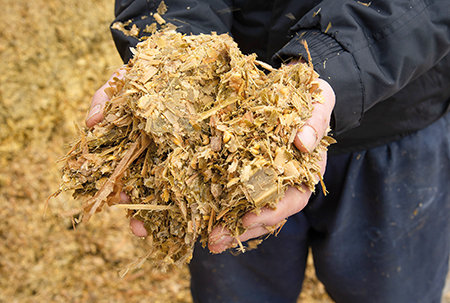Maize: An attractive breakcrop with SFI benefits
9th September 2024
Tom Turner of seed breeder KWS offers advice on varietal choice and outlines the new SFI maize options.

Maize offers an attractive break crop in arable and grassland rotations, according to Tom Turner of seed breeder, KWS.
A high acreage of maize seed was sown this spring, with several factors responsible for the spike in the national acreage, he said.
“The poor establishment conditions in autumn 2023 limited the opportunities for autumn cereal sowing countrywide. Growers looking for alternatives for March/April planting faced a shortage in the supply of spring cereal seed.
“Many producers turned to maize and despite the early season combination of high rainfall and low temperatures and the delay in target planting dates, most crops have caught up and are looking favourable. Nevertheless, there will be no early harvest this year, with cutting delayed by as much as two to three weeks in most regions.”
Given the late harvest date predicted for maize, careful varietal choice is key, he said.
“Maize breeding progress has made great strides in recent years and there are varieties available to suit almost every growing situation. On farms with a heavy soil type, and/or where there is a significant risk that conditions will deteriorate rapidly in the autumn, it may be worth considering early varieties; also known as short season varieties. They have been bred for their ability to mature in as little as 130 days post-planting, while the figure is closer to 160 for more mainstream types.”
SFI boost
The launch of a range of maize options within the Sustainable Farming Incentive are expected to give the crop a further boost in popularity.
“The most imminent option for arable growers looking for a back-up policy, should a late maize harvest make a following winter cereal unviable, is CSAM2,” he explained. “It offers a payment of £129/hectare for establishing, or stitching in, a multi-species seed mix after the maize harvest. It is part of the drive to reduce bare soils over the winter, which in turn exacerbate the risk of soil erosion and nutrition run-off, along with soil structure damage.
“Some maize will have already been grown alongside a companion crop, so it is simply a matter of adding extra seed to thicken up the winter cover. In other cases, a new cover crop will need to be established. It can be grazed by livestock the following spring or ploughed in to improve soil structure in preparation for the next crop. This is another instance in which early varieties can be useful, as they can help to bring forward harvest and allow time for sowing the multi-species mix.
“In order to qualify for the support, growers should choose from a minimum of two separate species from a list which includes brassicas; herbs; grasses/cereals and legumes. Two examples include Westerwolds in combination with white clover, or Italian ryegrass and sanfoin.”

Another maize option within the SFI is CIPM3. “It is designed for implementation in the spring and can be taken up in conjunction with CSAM2, or as an option in its own right,” said Mr Turner. “The payment for CIPM3 is £55/ha, which is offered for undersowing maize with a grass/clover mixture. The timing would be the 5–6 maize leaf stage, which is usually in June.
“The cost of establishment is approximately £100/ha for seed, fuel and labour, but the practice could supply roughly 30kg of nitrogen/ha for the following crop. Another bonus is the improved ground travel at maize harvest time, and it carries the same plus points of soil structure enhancement and reduced nutrient losses as CSAM2.
“Growers who take up the CIPM3 option should bear in mind that damage to young maize plants must be avoided when undersowing, as they are vulnerable in the early stages. There must also be adequate soil moisture at sowing.”
On farms where maize acts as a break crop in temporary grassland, the SFI SOH4 option could be attractive, he pointed out.
“The SOH4 payment is £203/ha,” said Mr Turner. “It is offered for cover crop establishment after an early maize harvest, or for maintaining a previously established undersown/companion crop. It may not be applicable this year, however, as the rules state the aim of establishment by mid-October, although it could form part of a future rotation. It involves a three-year commitment.”
Break crop advantages
In terms of its benefits as a break crop, maize has many advantages over some of the alternatives.
“Maize can make an excellent entry for a first wheat, giving an opportunity for black grass control and providing an effective break for most diseases, resulting in a subsequent yield boost for a following cereal crop. It can also be sold straight off the field or made into a high-value silage for livestock, at a time when producers are looking to increase home-grown feed production,” said Mr Turner.
Read more arable news

